SFFT Documentation
Release 0.1
Jörn Schumacher
June 11, 2013
�
�
CONTENTS
1 Introduction
.
.
1.1 When Should I use the SFFT library? . . . . . . . . . . . . . . . . . . . . . . . . . . . . . . . . . .
1.2
. . . . . . . . . . . . . . . . . . . . . . . . . . . . . . . . . . . . .
. . . . . . . . . . . . . . . . . . . . . . . . . . . . . . . . . . . . .
1.3
. . . . . . . . . . . . . . . . . . . . . . . . . . . . . . . . . . . . .
.
1.4 Disclaimer
. . . . . . . . . . . . . . . . . . . . . . . . . . . . . . . . . . . . .
Credits .
1.5
.
Contact Information .
1.6
.
. . . . . . . . . . . . . . . . . . . . . . . . . . . . . . . . . . . .
Target Platform .
.
Limitations and Known Bugs
.
.
.
.
.
.
.
.
.
.
.
.
.
.
.
.
.
.
.
.
.
.
.
.
.
.
.
.
.
.
.
.
2 Installation
2.1
2.2
2.3
3 Usage
3.1
3.2
.
Prerequisites .
. . . . . . . . . . . . . . . . . . . . . . . . . . . . . . . . . . . .
Compiling From Source and Installation . . . . . . . . . . . . . . . . . . . . . . . . . . . . . . . .
Linking against the SFFT Library . . . . . . . . . . . . . . . . . . . . . . . . . . . . . . . . . . . .
.
.
.
.
.
.
.
.
.
Computing Sparse DFTs .
SFFT Versions .
.
.
.
.
.
.
.
.
.
.
.
.
. . . . . . . . . . . . . . . . . . . . . . . . . . . . . . . . . . . .
. . . . . . . . . . . . . . . . . . . . . . . . . . . . . . . . . . . . .
4 Development
4.1 Development and Benchmark Tools . . . . . . . . . . . . . . . . . . . . . . . . . . . . . . . . . . .
4.2 An Overview of the Sourcecode . . . . . . . . . . . . . . . . . . . . . . . . . . . . . . . . . . . . .
5 Indices and tables
3
3
3
3
3
3
4
5
5
5
6
7
7
8
11
11
12
13
i
�
ii
�
Contents:
SFFT Documentation, Release 0.1
CONTENTS
1
�
SFFT Documentation, Release 0.1
2
CONTENTS
�
CHAPTER
ONE
INTRODUCTION
The Sparse Fast Fourier Transform is a DFT algorithm specifically designed for signals with a sparse frequency
domain. This library is a high-performance C++ implementation of versions 1, 2, and 3 of the different SFFT variants.
1.1 When Should I use the SFFT library?
You should use the SFFT library when you want to compute the Discrete Fourier Transform of a signal and only a few
frequency components occur in the signal. Your signal may be noisy or not, but currently there are some limitations
for noisy signals (see Limitations and Known Bugs).
1.2 Target Platform
The SFFT library was optimized to run on modern x86 desktop CPUs with SSE support. Optionally the implementa-
tion can use the Intel IPP library, which is only available on Intel platforms.
1.3 Limitations and Known Bugs
The SFFT library features implementations of SFFT v1, v2, and v3. SFFT v1 and v2 currently only work with a few
specific input parameters. SFFT v3 cannot handle signals with noise.
There are no known bugs so far.
1.4 Disclaimer
The current SFFT implementation is in an experimental state. It is NOT intended to be used as a drop-in replacement
for the FFT library of your choice. Be prepared to find bugs. There is absolutely NO WARRANTY for the correct
functioning of this software.
1.5 Credits
The original SFFT sourcecode was developed by Haitham Hassanieh, Piotr Indyk, Dina Katabi, and Eric Price at
the Computer Science and Artifical Intelligence Lab at MIT. The original sourcecode and contact information can be
found at their website Sparse Fast Fourier Transform Website.
3
�
SFFT Documentation, Release 0.1
Performance optimizations were developed by Jörn Schumacher as part of his Master Thesis Project at the Computer
Science Department of ETH Zurich in 2013, under the supervision of Prof. Markus Püschel.
1.6 Contact Information
If you are interested in the theory behind the Sparse Fast Fourier Transform, contact the inventors of the SFFT, Haitham
Hassanieh, Piotr Indyk, Dina Katabi, and Eric Price, at their Sparse Fast Fourier Transform Website.
If you are interested in performance optimizations that were applied, contact Jörn Schumacher at
erns@student.ethz.ch.
jo-
4
Chapter 1.
Introduction
�
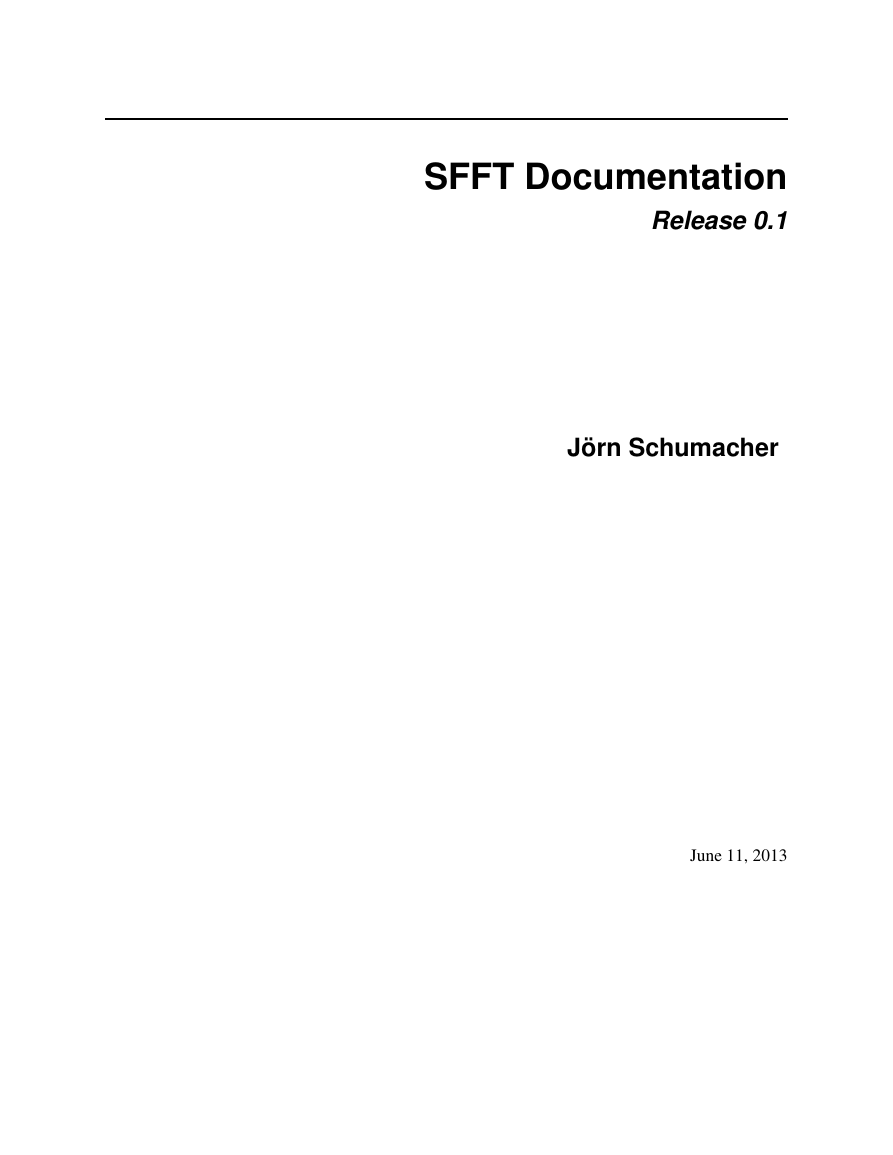

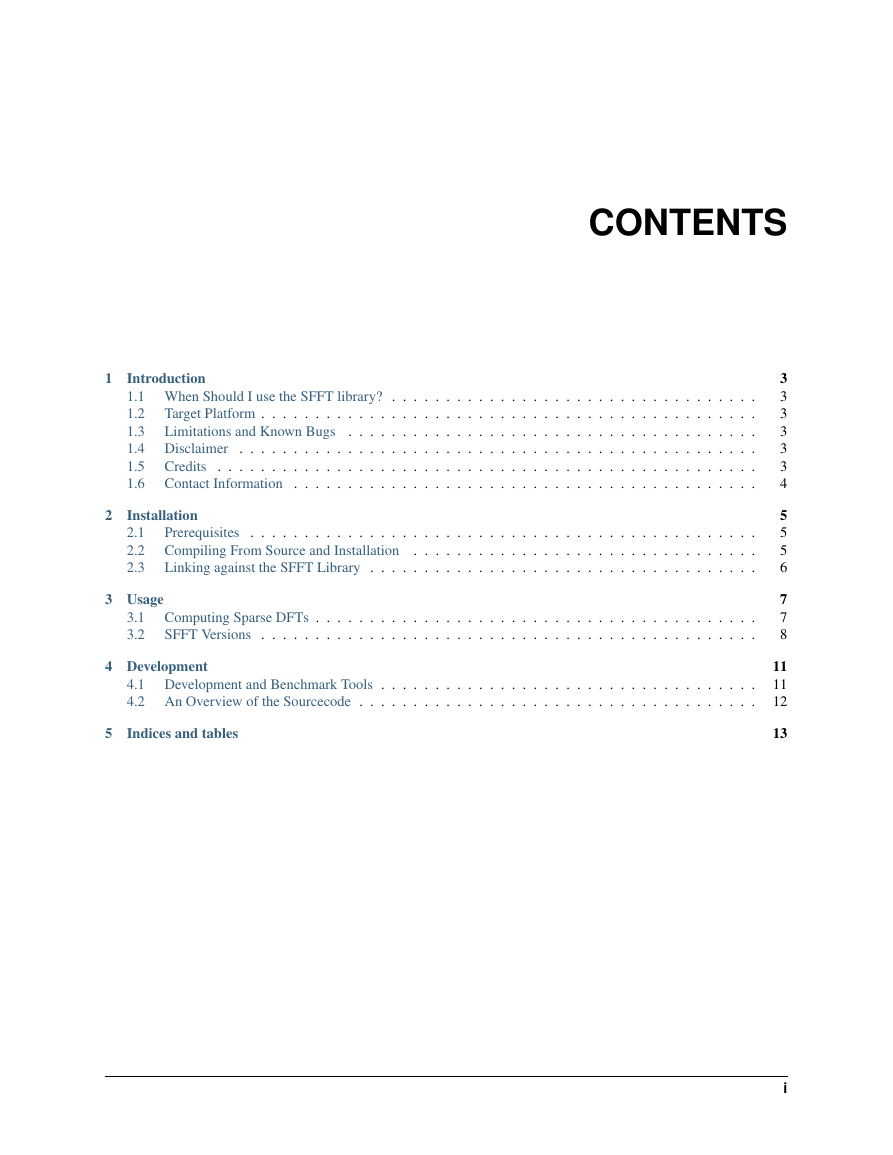

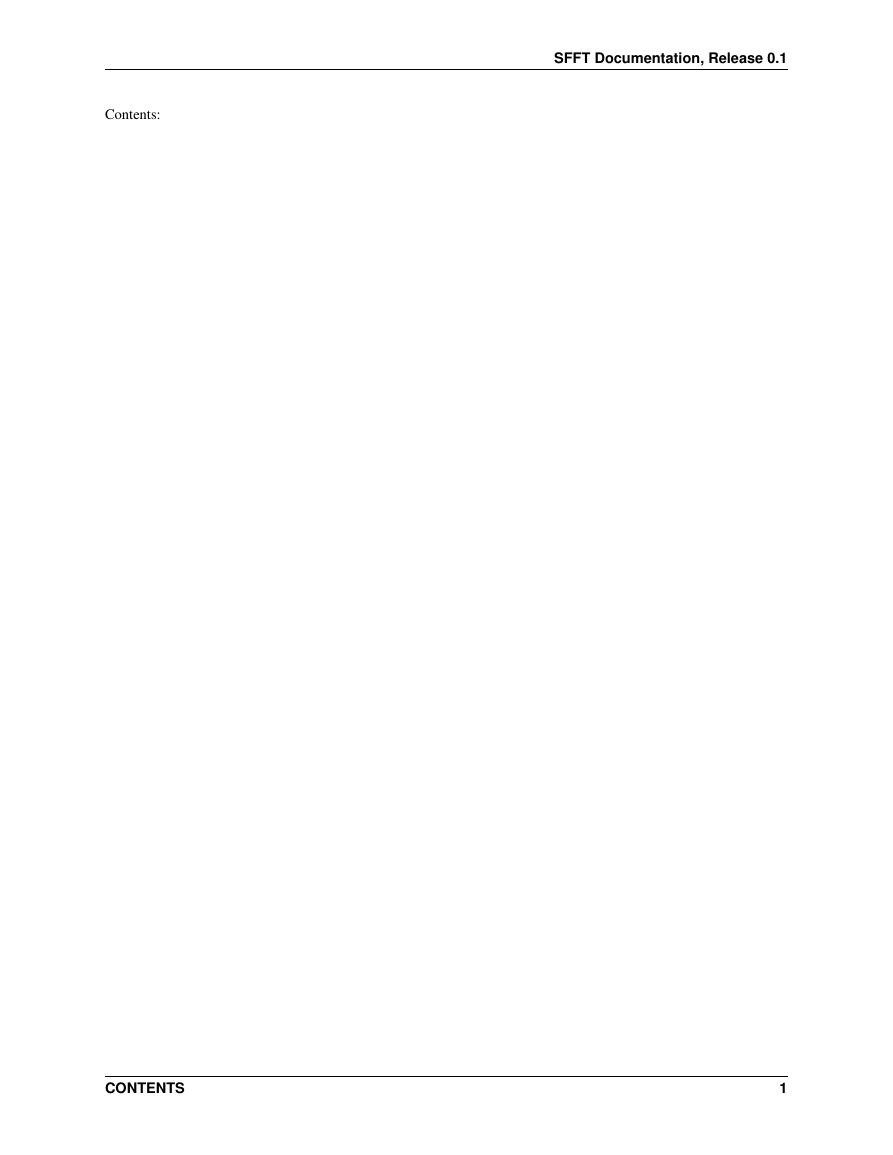
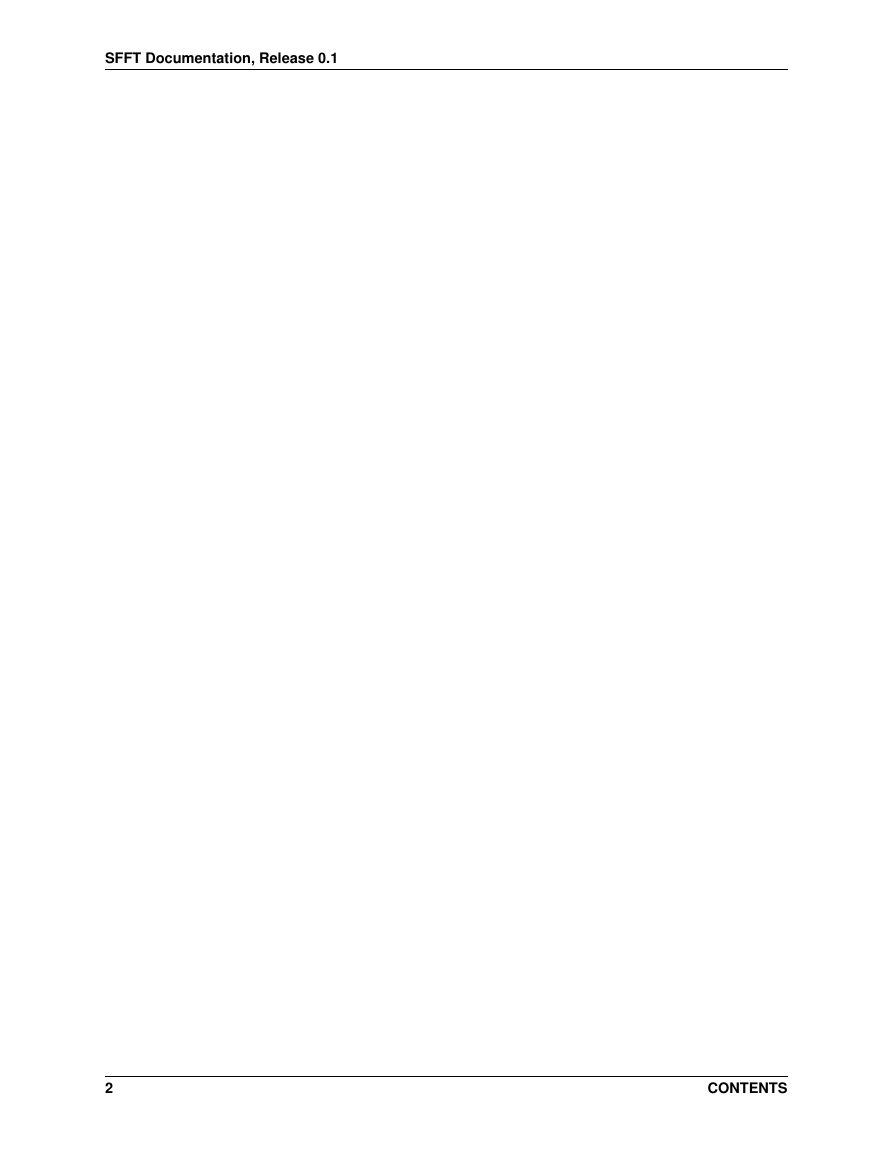
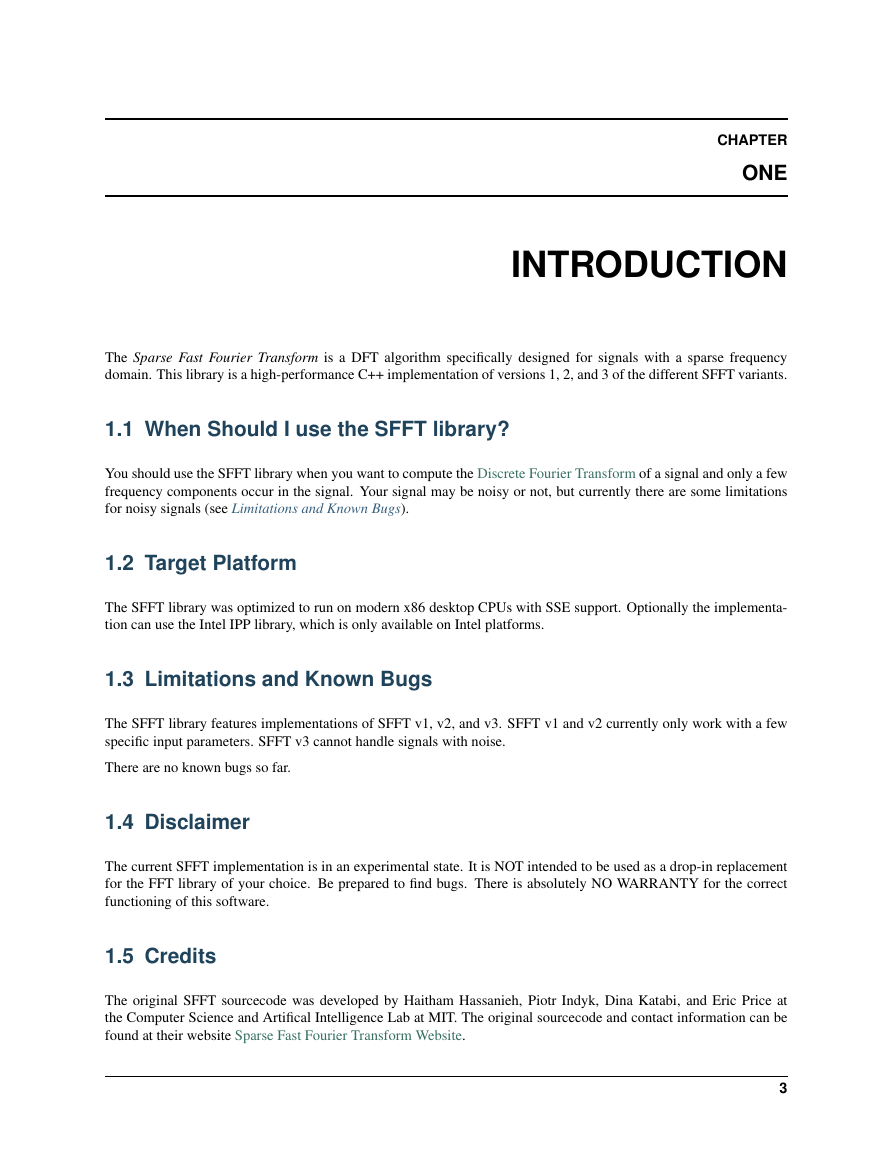
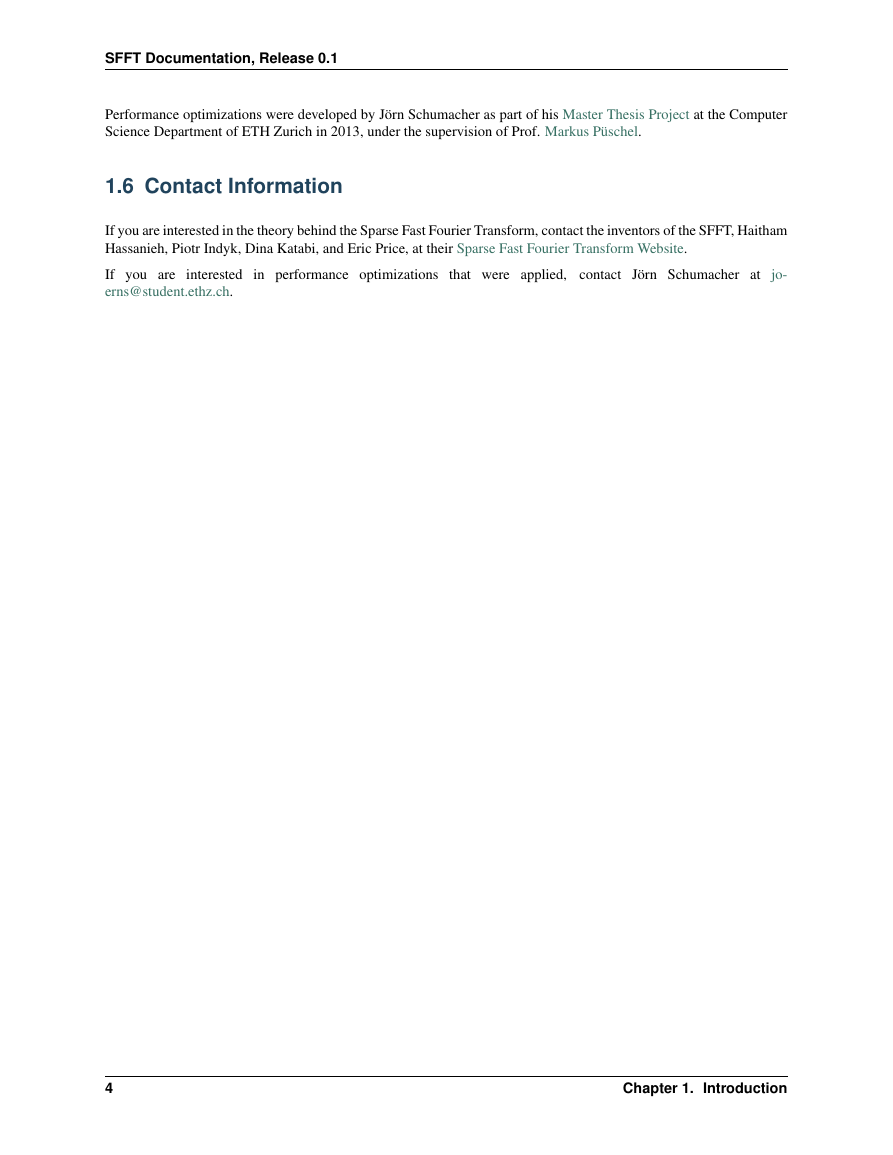








 2023年江西萍乡中考道德与法治真题及答案.doc
2023年江西萍乡中考道德与法治真题及答案.doc 2012年重庆南川中考生物真题及答案.doc
2012年重庆南川中考生物真题及答案.doc 2013年江西师范大学地理学综合及文艺理论基础考研真题.doc
2013年江西师范大学地理学综合及文艺理论基础考研真题.doc 2020年四川甘孜小升初语文真题及答案I卷.doc
2020年四川甘孜小升初语文真题及答案I卷.doc 2020年注册岩土工程师专业基础考试真题及答案.doc
2020年注册岩土工程师专业基础考试真题及答案.doc 2023-2024学年福建省厦门市九年级上学期数学月考试题及答案.doc
2023-2024学年福建省厦门市九年级上学期数学月考试题及答案.doc 2021-2022学年辽宁省沈阳市大东区九年级上学期语文期末试题及答案.doc
2021-2022学年辽宁省沈阳市大东区九年级上学期语文期末试题及答案.doc 2022-2023学年北京东城区初三第一学期物理期末试卷及答案.doc
2022-2023学年北京东城区初三第一学期物理期末试卷及答案.doc 2018上半年江西教师资格初中地理学科知识与教学能力真题及答案.doc
2018上半年江西教师资格初中地理学科知识与教学能力真题及答案.doc 2012年河北国家公务员申论考试真题及答案-省级.doc
2012年河北国家公务员申论考试真题及答案-省级.doc 2020-2021学年江苏省扬州市江都区邵樊片九年级上学期数学第一次质量检测试题及答案.doc
2020-2021学年江苏省扬州市江都区邵樊片九年级上学期数学第一次质量检测试题及答案.doc 2022下半年黑龙江教师资格证中学综合素质真题及答案.doc
2022下半年黑龙江教师资格证中学综合素质真题及答案.doc